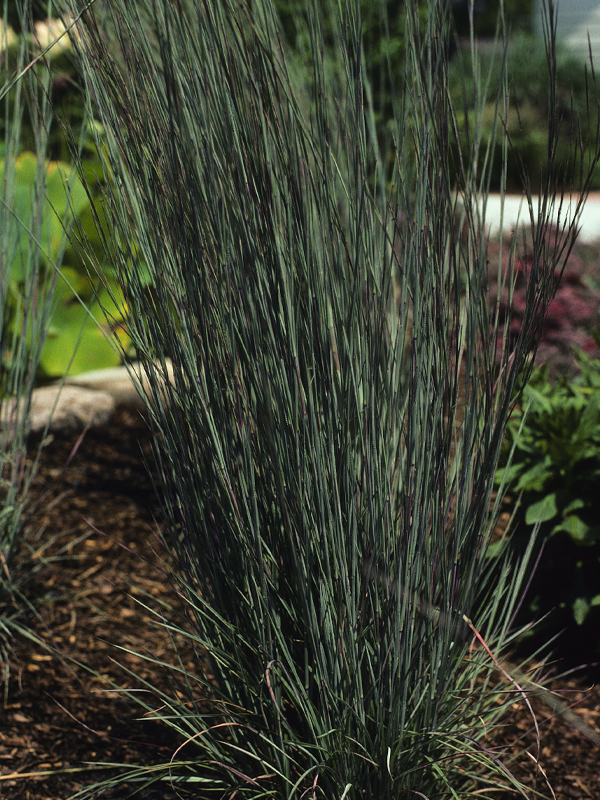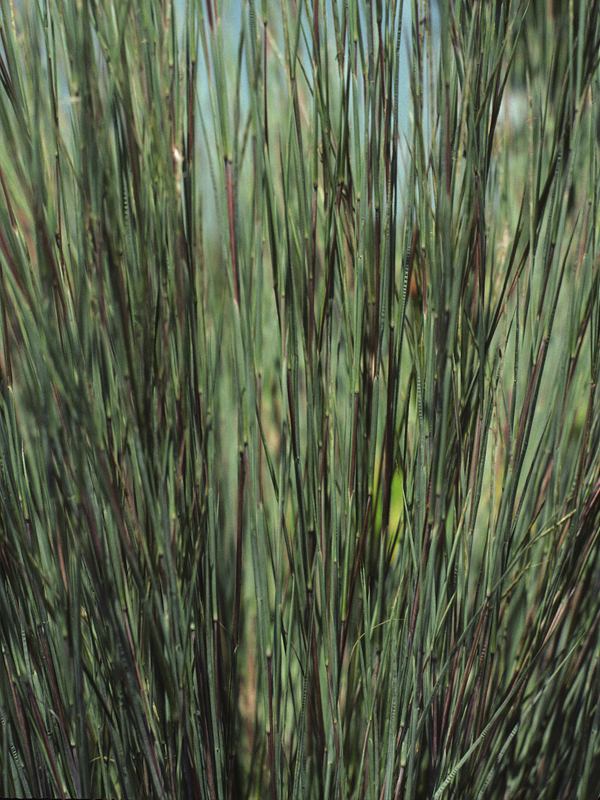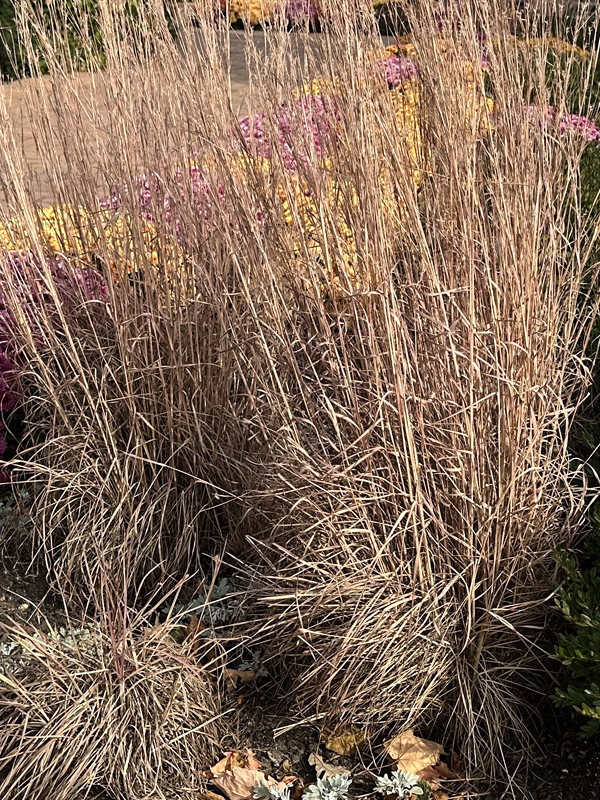Schizachyrium scoparium
Ornamental grasses are fundamental to the four-season garden. In spring their emerging leaves arrive just in time to help conceal yellowing bulb foliage. As summer progresses, their clumping mounds, upright habits, or spiky tufts progress to vertical accents, which provide structure and delicate line to perennial borders. Flower heads make a late-season entrance, adding plumes or spikelets to the garden silhouette. Fall colors nip grasses with the same tones that echo across the landscape. Even when winter strikes, grasses offer their subtle charms. We are glad for their creamy tones and their graceful forms as they catch puffs of snow at random angles and rustle in the winter wind.
Little bluestem (Schizachyrium scoparium) is a four-season wonder.
A true native of the tallgrass prairie, this rugged, warm-season grass grows throughout the eastern and central states, in prairie remnants, dry hills, and open woods. Its cold and drought tolerance, along with its ornamental attributes, make it a good choice for naturalistic or more formal plantings, massed in hilly drifts, aiding in erosion control as a ground cover, or highlighting mixed borders. The Chicagoland Grows® Plant Introduction Program has recently introduced 'Carousel', a compact selection of little bluestem that features outstanding ornamental traits year-round.
Little bluestem prefers full sun but is not fussy about soil as long as it is not too rich or wet. In spring, just as the narcissus emerge, cut the dried clump back to a few inches. This grass is a good companion to bulbs since both prefer dry summer conditions. Later in the season, little bluestem looks especially fine when paired with sedums, goldenrods, asters, and other favorite late bloomers.
Some have referred to little bluestem as "neither little nor blue." In the Chicago area it grows close to 3 feet, with most of that height taken by the stems that remain erect even in winter, and the seedheads that provide food for hungry birds. But it is the constantly changing color of this grass that is so impressive. Emerging pale gray green in spring, the stems and foliage darken throughout summer but retain a hint of blue at their base. Other gardeners report a deepening blue, almost into purple, as summer progresses. Silvery flower stalks appear July to September. Autumn brings out the reds, as dipping temperatures increase the flame to brilliant orange. Winter color can remain coppery brown, so lovely when set against evergreens in the snow. Because of the considerable color variance of this grass, delightful surprises are in store for the gardener! Little bluestem, and other wonders of the winter landscape, can be found in the Prairie, the parking areas, the Native Plant Garden, the Landscape Gardens, and the Heritage Garden.




